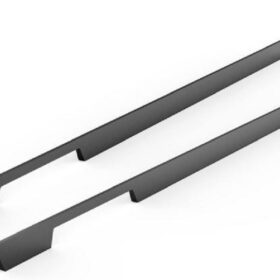The Role of Ergonomics in Modern Furniture Handles
In today’s modern world, furniture is not just about aesthetics but also about functionality and comfort. Ergonomics plays a crucial role in furniture design, particularly in the design of furniture handles. Furniture handles that are ergonomically designed not only enhance the overall user experience but also contribute to improved health and well-being.
Comfort and Usability
Ergonomic furniture handles are designed to provide maximum comfort and ease of use. They are typically shaped to fit the contours of the human hand, ensuring a secure and comfortable grip. The handles are often made of soft, tactile materials that reduce strain and fatigue on the user’s hands and wrists. Proper handle placement also plays a significant role in reducing discomfort and promoting optimal body posture.
Reduced Strain and Injuries
Ergonomic furniture handles can help prevent strain and injuries that may result from prolonged or repetitive use of furniture. By reducing the force required to operate the handles, they minimize muscle fatigue and strain in the hands, wrists, and forearms. This is especially important in highly trafficked areas or workplaces where furniture is used frequently.
Improved Posture and Alignment
Furniture handles that are positioned correctly can promote proper posture and alignment. Handles that are too high or too low can force the user to adopt awkward positions, leading to muscle imbalances and back pain. Ergonomic handles are placed at an optimal height and angle, ensuring that the user’s body remains in a neutral and relaxed position while operating the furniture.
Variety and Customization
Modern furniture handles are available in a wide variety of shapes, sizes, and materials to suit different user needs and preferences. Ergonomic handles are designed to accommodate different hand sizes, grip strengths, and disabilities. Adjustable handles allow users to customize the position and orientation of the handles to their specific needs, further enhancing comfort and usability.
Aesthetic Considerations
While ergonomics is of paramount importance, modern furniture handles also contribute to the overall aesthetics of the furniture. They can complement the design of the furniture, adding a touch of style and sophistication. Ergonomic handles are available in various finishes and colors, allowing designers to match them seamlessly with the furniture’s style and decor.
Conclusion
Ergonomics plays a vital role in the design of modern furniture handles. By incorporating principles of ergonomics, furniture manufacturers can create handles that are comfortable, easy to use, and contribute to improved health and well-being. Ergonomic furniture handles enhance the user experience, reduce strain and injuries, promote proper posture, and complement the aesthetics of modern furniture. As the demand for ergonomic products continues to grow, the role of ergonomics in furniture design will only become more significant in the years to come.
-
2024-09-14Exploring the Different Types of Modern Closet Door Pulls and Their Applications
-
2024-09-14How Cabinet Door Pull Handles Support High-Traffic Areas
-
2024-09-06Cost-Benefit Analysis of Investing in High-Quality Long Wardrobe Door Handles
-
2024-09-04How Flat Cabinet Handles Enhance Modern Interior Design
-
2024-11-29Top Trends in Modern Kitchen Cabinet Pulls for 2024
-
2024-11-28The Ultimate Guide to Modern Kitchen Cabinet Pulls- Materials, Styles, and Tips
-
2024-11-27Elevate Your Kitchen Design with These Must-Have Modern Cabinet Pulls
-
2024-11-26Sleek and Stylish- The Best Modern Kitchen Cabinet Pulls for a Contemporary Look






